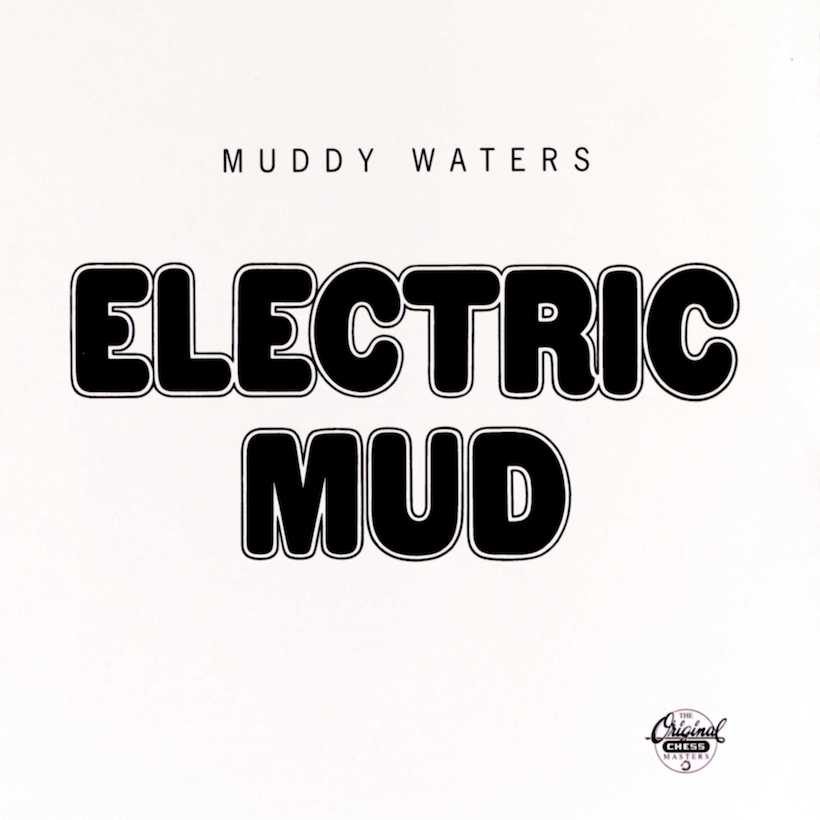Wading Into Muddy Waters’ Blues-Rock Hybrid ‘Electric Mud’
In 1968, Muddy Waters took the blues in a new direction with ‘Electric Mud’ and managed to influence the likes of Chuck D to Jimi Hendrix in the process.

Marshall Chess, son of Chess Records co-founder Leonard, had to work hard to persuade Muddy Waters of the benefits in recording Wading In Electric Mud, released on October 5, 1968. But persuade him he did, and Marshall made plans to set up the studio, and fill it with predominantly jazz-blues crossover musicians who were breaking into blues rock.
Most notably was psychedelic guitarist Pete Cosey, who would play a pivotal role in Miles Davis’ mid-70s electric period. In 1968, Cosey was a member of Sun Ra Arkestra. Also, much sought-after bass player and guitarist Phil Upchurch came fresh from a run of jazz guitar gigs with Stan Getz, Jack McDuff, Jimmy Smith, and Woody Herman. Upchurch would make up a trio of jazz guitarists alongside Cosey and Roland Faulkner; the bass duties were handled by Chess-man Louis Satterfield.
Listen to Electric Mud right now.
Another in-house man, producer Gene Barge, also brought his saxophone and arranging skills, while his and Satterfield’s colleague, Morris Jennings stepped in as drummer on the date. Future Earth, Wind & Fire producer Charles Stepney took the electric organ seat, following up a busy period of arranging and composing for R&B vocalists The Dells, the brilliant psychedelic soul group Rotary Connection, and jazz legends Eddie Harris and Ramsey Lewis. He had previously worked with Muddy Waters at Chess a couple of years beforehand, providing arrangements for Brass and the Blues, a mostly successful reimagining of the Waters ‘canon’ in the style of well-selling bluesman B.B. King.
Marshall Chess brought his backing musicians in early, so that by the time Waters arrived, all he had to do was come in at the right places identified for vocals and his few solos. But Waters did a lot more than just go through the motions: He put in one of his most spirited studio performances.
“Hoochie Coohie Man,” in particular, seems to synthesize Chess’ vision admirably, comfortably combining heavy backbeat, soaring guitar lines, pulsating bass, swelling organ, and jazzy sax.
But it’s Waters’ innate musicality that wins the day and makes Electric Mud work. Listen to the skill he has in shaping his voice around the sharp edges on “Tom Cat,” or on the funky reworking of “Mannish Boy,” how he power-lifts the heavy rhythms with a single yell, and punches a hole through its armor-plating with a “yeah” here and there.
The cover of Jagger and Richards’ “Let’s Spend the Night Together,” is an appreciative doff of the cap to some of his biggest fans, while also attempting to connect with a sizeable slice of the youth market, but it’s the raw power behind Waters’ delivery that shines through. He transforms what might have been a trite exercise in cynicism into a believable impassioned plea for consummation.
Despite his initial misgivings, Waters had enjoyed the session, taking to its raw energy and maxed-out volume better than his label-mate Howlin’ Wolf, who would follow him into the studio about a month later to be met by essentially the same backing group.
Turning up the volume connected Muddy with the rock audience. Just as they had reconnected Waters with his acoustic past for Folk Singer in 1963, Chess had made another good business call. Released on October 5, 1968 and racking up 150,000 sales within six weeks, Electric Mud was the first of his albums to make it on to a Billboard chart.
Jimi Hendrix and a number of other high-profile musicians liked it too, with Hendrix listening to “Herbert Harper’s Free Press News” during his own performance warm-up. Some critics were less impressed, seeing it as the prostitution of a sacred genre. But as Nat ‘King’ Cole once said, “Critics don’t buy records, they get ’em for free.”
There are many that revere Electric Mud as an overlooked classic. Public Enemy’s Chuck D and others have hailed it as an early influence on hip-hop. He even led a reunion performance by the original session players, with hip-hop elements added, rechristened “The Electric MudKats.” Whatever your take on it, Electric Mud is well worth checking out.











True Blue
October 6, 2016 at 12:08 am
In hindsight ,nowadays blues folks are still split over this album which by and large was an “exploitation project ” cashin’ in on psychedelia phenomenon of the time after all ’68 was high mark for psychedelics (of every kind)Takin’ to account all that Mud has done before or since this was rather dismal, needless project until this day stillborn.
Roger Gough
October 6, 2016 at 10:09 am
Wanna hear a great record? Listen to ‘You can’t sit down’ by Phil Upchurch. First heard ii in the early ’60s, have never forgotten it.
Carlo
October 5, 2017 at 6:42 pm
I agree w/ ROGER : Phil NAILED it… YOU CAN’T SIT DOWN… True Blue’s comment was dismal & needless. “Cashin’ in” ? Those ole Blues Cats never saw much CASH